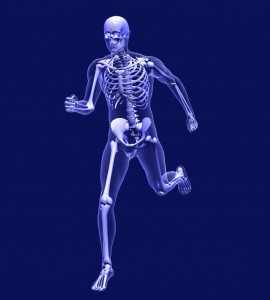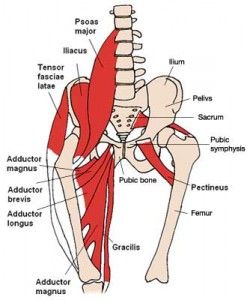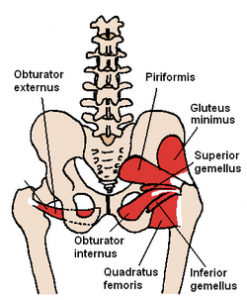Brian Schiff’s Blog
Injury Prevention, Sports Rehab & Performance Training Expert
I returned from a Disney vacation with my family last week. While there, I saw all the runners who had just finished the marathon. Several of them had compression socks and I was inspired to write today’s blog.
In 2009, I wrote a blog post on soleus strains, the Anatomy of a Soleus Injury. It is a widely read post about a commonly misdiagnosed issue and brings many inquiries as to how to solve this condition that plagues runners. One question I often get is will compression socks help? Over the past few years, I have seen a proliferation in the use of compression socks in the recreational running community.

But what exactly do these garments do? Some of the proposed benefits are:
- Improved oxygen delivery to muscles
- Faster lactic acid resolution
- Prevention of muscle cramping
- Better stabilization of the lower leg leading to improved muscle efficiency
- Enhanced venous return to the heart through a more efficient calf muscle pump, leading to increased endurance capacity
- Diminished muscle fatigue resulting from more compact muscles, leading to improved balance and proprioception
What does science have to say about compression garments. I performed a literature search for relevant articles pertaining primarily to runners and endurance activity. Below are some links to recent research abstracts:
– Physiological effects of wearing graduated compression stockings during running
– Compression stockings in male runners
– Impact on high intensity exercise in hot conditions
– Effect on 400 m sprint performance
– Impact on endurance running performance
– Effect of graduated compression stockings on running performance
– Calf compression sleeves and impact on oxygen saturation/running performance
In summary, much of the research we have no seems to tell us the following things:
- Compression garments do not yield any measurable performance advantages
- Runners prefer low compression socks over mod/high levels for comfort
- Recovery does appear to be aided with compression in terms of improved venous flow and O2 saturation
- No specific studies on gastroc/soleus muscle strains/rehab strategies using the socks
There is no conclusive evidence that these garments will prevent muscle strains, but research does indicate that perceived exertion is lower and the psychological impact of wearing the garment may aid runners. I have not tried these myself, but some of my clients swear by them. The idea of supporting/compressing soft tissue is certainly not new and many find some comfort in it. We need more studies specific to injured populations to accurately evaluate the impact on those recovering from gastroc/soleus strains.
With that said, I am in favor of any modality that may allow athletes to train and compete with more confidence and less perceived exertion even if there is no direct measurable performance gain. While I will stop short of endorsing these compression socks, I do see some potential benefits for those coming back from an injury in terms of recovery that warrant some consideration until they resume their prior levels of activity pain free. For runners suffering from muscle injuries, utilizing soft tissue mobilization, stretching, strengthening, and proper running progression is still a an absolute must.
The company I am privileged to work for has officially entered into a partnership with Athletes’ Performance. We are joining forces with them to take our performance training to an even higher level. So, the Athletic Performance Center is now:

I am pumped as we will be able to offer the same elite level training and nutrition services that are offered at other locations in AZ, FL, TX, CA and MA. I will continue in my role as supervisor and sports physical therapist and look forward to all the great things to come. If you are not familiar with AP, check them out at www.athletesperformance.com.
Click here for a detailed press release from Raleigh Orthopaedic Clinic. I am confident this new venture will help me sharpen my saw and become an even better clinician and performance training expert.
As a therapist and fitness enthusiast, I always want to know the “why” and implications for exercises. I have posted on modified push-ups in the past, but I felt compelled to share some information that was published in the October 2012 Strength and Conditioning Journal. Bret Contreras et al. discuss the biomechanics of the push-up and provide an excellent overview of the different types of push-ups and what research has to say about them.

I was most interested by the parts on unstable push-ups as I tend to use the BOSU Balance Trainer and BOSU Ballast Ball in many of my programs. Here are some key points that the authors point out that are worth mentioning:
- BOSU push-ups have been shown to increase activity of some of the scapular stabilizers namely upper, middle and lower trapezius fibers compared to standard push-ups, while serratus anterior activity is diminished (Tucker et al. Arch Phys Med Rehabil 2010)
- Lehman et al. (Man Ther 2008) reported that elevating the feet above the hands had a greater stimulus on scapulothoracic stabilizing musculature than placing the hands on an unstable surface
- Lehman et al. (Dyn Med 2006) found that push-ups w/hands on a stability ball significantly increased the triceps brachii activation as well as invoking increased activation of pec major, rectus abdominus and external obliques compared with push-ups on a bench from the same angle. However, note that feet on the stability ball did not affect muscle activity compared to push-ups with feet on a bench at the same angle
- According to Marshall and Murphy (Apply Physiol Nutr Metab 2006) triceps brachii and abdominal EMG activity was much greater when performing push-ups off a stability ball compared to stable surfaces from flat and elevated positions
Takeaways:
- Using unstable surfaces for push-ups when the primary base of support is the stability ball, BOSU, or BOSU Ballast Ball is more effective in increasing muscle activation of aforementioned muscles
- Placing the feet on an unstable surface does not add much benefit in terms of increasing muscle activation
- Maintaining a stable torso and spine angle is key and should not be compromised with an unstable surface
Other thoughts of mine:
Mastering form, alignment and strength with stable push-ups is common sense, right? So, do not advance to unstable push-ups without pre-requisite strength and satisfactory technique in a stable environment. Wrist mobility, shoulder stability, and core strength are just a few other key factors that should weigh in your decision to implement unstable push-ups.
Considering some isometric work with slightly bent elbows or even some small pulses can be effective in progressing toward these more advanced unstable push-ups. Clients need to understand the point of no return and I prefer to spot closely particularly when using a stability ball or BOSU Ballast Ball. Working with the BOSU (dome side down) is generally safer and allows for easier modification with the knees on the ground for those with less upper body strength or diminished control.
I also like to add a plus (scapular protraction at the top) to help counter the loss of serratus activity seen with BOSU push-ups. In the end, I really like using the unstable surface as the point of balance and have for some time. There are many ways to do push-ups, but considering some unstable work has a good return for those clients whoa ready for it.
Below is a picture of the BOSU Ballast Ball – I prefer it over the stability ball as it is less likely to slip out from underneath the client. It provides excellent shoulder and core stability work – my primary goals when electing to use it. Reps, sets, progression and recovery will be dictated by fatigue and form at all times.

It has been a while since my last post. To be honest, I have been busy with preparing/presenting my live seminar last week and webinars, as well as fulfilling my writing obligations and clinical role. So, I have been taking a “break” from blogging and recharging the battery so to speak.
Now I am getting back to it. The great thing about presenting though is that I am consistently reading and reviewing the latest research on topics related to my presentations and closely examine my rehab and exercise philosophy. In my clinic, I treat many runners for knee pain.

The average profile is an experienced runner b/w the ages of 25 and 50 who logs 20 – 35 miles per week and routinely competes in half marathons or some sort of triathlons.
Common injuries include IT band problems versus lateral meniscus tears versus patellofemoral pain. Often, I uncover the following things related to kinetic chain deficiencies:
- Elevated or rotated inominate
- Ankle dorsiflexion restriction (OH squat assessment)
- Poor single leg stance
- Weak lateral myofascial chain
- TFL dominance
- Excessive femoral internal rotation/adduction with single leg squats
- Tightness in hip flexors, ITB and soleus
Many currently debate the efficacy of foam rolling. Is it worthwhile? Some say yes, while others say no.
I have been a bit behind on blogging as of late. I try to aim for one per week, but I also strive to deliver sound and relevant content. Additionally, I do not seek outside contributors so finding time to write can be tricky with work and family life too. So, forgive me for any apparent inconsistency in posting. Just know that I will always try to provide valuable content. Today’s post centers around an article in the July 2012 edition of AJSM.

My work at the Athletic Performance Center has provided me an increased opportunity to work with FAI and athletic hip injuries. This is an area of evolution and growth in our field, so I find it particularly interesting to see rationale and thought processes centering around the timing, contribution and selection of hip exercises for active patients/athletes.
This article comes from the Steadman Philippon Research Institute in Vail, CO. The purpose of the study was to measure the highest activation of the piriformis and pectineus muscle during various exercises. The hypothesis was that highest pectineus activation would occur with hip flexion and moderate activity with internal rotation, whereas the highest activation with the piriformis would be with external rotation and/or abduction.


Methods: 10 healthy volunteers completed the following 13 exercises:
- Standing stool hip rotation
- Supine double leg bridge
- Supine single leg bridge
- Supine hip flexion
- Side-lying hip ABD with external rotation
- Side-lying hip ABD with internal rotation
- Side-lying hip ABD against a wall
- Hip clam exercise with hips in 45 degrees of flexion
- Hip clam exercise with hips in neutral
- Prone heel squeeze
- Prone resisted terminal knee extension
- Prone resisted knee flexion
- Prone resisted hip extension
All of these exercises have been reported to be used in hip rehab following arthroscopy or recovery from injury. The exercises were executed slowly and methodically with a metronome to reduce EMG amplitude variations.

